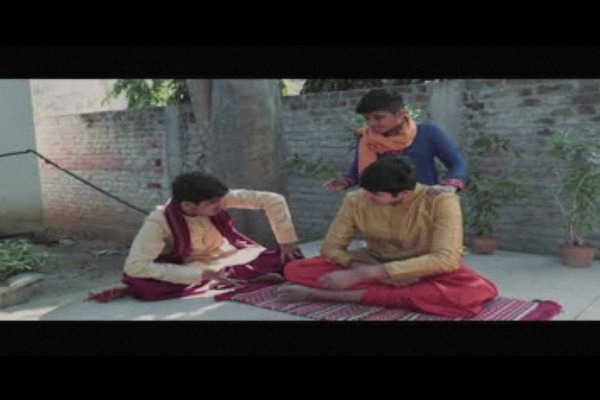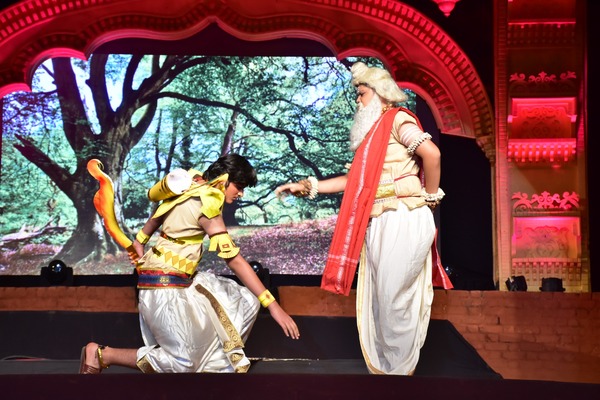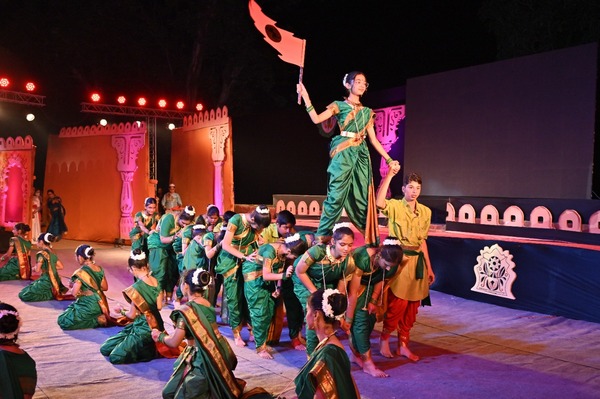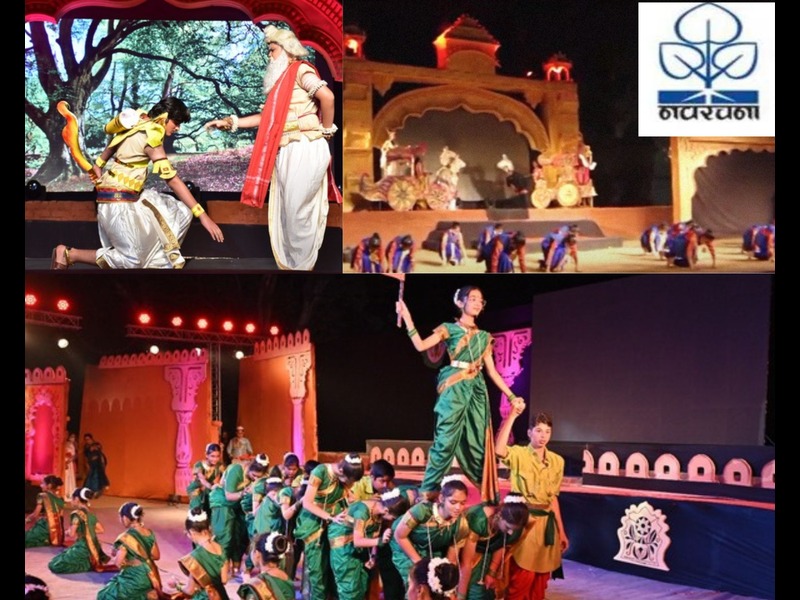Navrachana School, Sama: Integrating performing arts in education
– Kamna Gupta, Creative Director, Head of Hindi department, Navrachana School, Sama
Children need art, stories, dance, theatre, poetry and music in education just as much as they need love, nutrition, fresh air and sports.
The year 2020 unfurled with a wave of change. The national education policy which had remained unchanged for 34 years was transformed by the Ministry of Education and was launched as the new National Education Policy 2020. The new policy emphasised on application based learning and revolutionised teaching-learning by including practical applications for each subject. Apart from this, a multitude of competitions organised by CBSE has included stories, drama, skits portraying the life stories of crucial historical and mythological entities, stage plays on the brave battles that our freedom fighters had relentlessly fought, and so on. These changes indicate that we can no longer confine our students to bookish knowledge but also need to connect them to the workings and the reality of life and the world outside.
In the present age, with nuclear families becoming the norm, each member of the family stays occupied in their own tasks throughout the day. This is where the importance of theatre comes in. It is our duty to educate our youth about our culture and traditions by integrating theatre in education.
Theatre is more than just a mode of entertainment; it provides the youth exposure to the vigour of the past and gives them an opportunity to delve deeper into their heritage and values. This enables the young students to absorb the lessons of respect and love as well.
It is believed that many many hundred years ago, Bharat Muni had created the ‘Natya Shastra’ which had no boundaries of caste or religion. In the present age, it has become imperative to teach ‘Natya Shastra’ in schools and colleges.
At Navrachana School, teachers are provided a platform and the complete freedom to teach lessons in an impactful manner, such that it not only gets the students intrigued but they’re also able to understand it effectively. To enable the same, a myriad of facilities have been made available to us.
There can be no better way to express language than theatre.
I am a kathak dancer and have also pursued a diploma in Theatre and Drama, and thus I often try to amalgamate the skills I have acquired into my teaching which keeps my class at their liveliest.
I also teach class 10 Hindi part-B, which contains a chapter called ‘Harihar Kaka’ in the book Sanchayan. The lesson is extremely lengthy and while the chapter is good, it takes an awful amount of time to read through, and considering the decreasing attention spans of children they lose focus midway. To combat this problem I figured why not make a film based on this lesson? And the children themselves could play the characters. When I went to class and pitched this idea, the students were elated and in the blink of an eye, departments were sorted, there were teams for scripting, costumes, props, sketching of scenes, makeup and so on. A child was selected as the assistant director, and the venue and other details were finalised.
The film was created with the teamwork of forty students in a very short span of time. Each member burnt the midnight oil and I must admit that I felt the same excitement and enthusiasm at every given point of time. When the film was finally ready, Harihar Kaka truly shone through, leaving an indelible mark on the mind of the audience. We uploaded the video on youtube as well as the Diksha Portal, and the response was overwhelming. The video has 89,000 views so far and can be viewed on the link https://youtu.be/7BtgnnEjMrc.

To summarise, the world of theatre has found its worthy place and is contributing immensely to the learning of languages. At Navrachana School, Sama, the children are involved in every aspect of the Annual Concert organised by the school – from conceptualisation to script writing to making props and even choosing the characters in which we guide them along the way. And after continued and dedicated practice and rehearsals spanning over 12-15 days, the result is magnificent and soul stirring.
After learning the dynamics of theatre and the other arts students don’t just develop academically in school, but holistically, inching one step closer to becoming capable and responsible citizens of tomorrow. Thematic productions and realistic portrayal of characters keep the students close to their roots and cultural heritage.
The school’s Annual Concert ‘Karngatha’ can be viewed on https://youtu.be/mg1B6hZidLg

A play that I have written, ‘Shanti Shalaka’ based on the life story of the chakravorti Samrat Ashok has been featured to the book ‘Bal Naatak’ which was recognised and highlighted at a national forum by the Ministry of Information and Broadcasting, and has bagged the first position everytime our students have performed it on both national and international cultural festivals. Our students take part in various street plays every year, through which they voice their concern over the atrocities of the society inflicted on the helpless and ideate for solutions, you may access these video on youtube as well.

We also have a Theatre and Drama Club to mould and train the budding actors from across classes 3 to 10. These students have represented the school in several inter school drama competitions with unmatched passion
Theatre truly is a depiction of real life and imagined instances through the means of roles and situations. A student learning theatre gets to experience the emotions linked to various characters and roles, and the experience he takes away helps him throughout his life.
Various aspects of drama such as the search for the pursuit of creative options, thinking beyond the norms, portraying the same old items in yet a unique and beautiful way, etc. tests and builds on the imaginative power of the child.
Theatre also develops the student’s thought process on the concepts of ‘tolerance’ and ‘empathy’. Acting skills and moral values imparted through theatre is an essential medium to transform students into self sufficient and inventive individuals.
Making theatre an integral component of the curriculum offers the following benefits:
– Helps acquaint the students with the various emotional states and life situations in a person’s life.
– Educates the children about impactful and pure communication.
– Provides children with proper knowledge of human nature.
– Boosts their self confidence.
– Provides an opportunity for children to deliver correct pronunciations and language displays.
– Helps them dive into various diverse genres along with their education.
For example, when you ask a child to act out an idiom instead of memorising it, they get a better understanding of its implementation and usage without even realising it, and the idioms they once thought were ‘objectively’ difficult now seem much easier to understand.
We often categorise students on their expressive behavior and quirky expressions, referring to them as ‘drama queens’, but we don’t realise that we ourselves (maybe unconsciously) in many ways have adopted theatre in our lives. Even in the simplest of instances. We say the same sentence in different ways in front of different people, this in itself is a part of theatre.
Therefore, in these times of increasing stress and mental exhaustion, theatre and expression steps in as a true saviour for students, not only by helping to alleviate their stress but also by instilling in them social and moral values. This small but extremely crucial step can contribute towards the creation of a progressive society and help us advance towards the common goal of a peaceful and better world.
Also read:
Navrachana School: Nurturing scientific temper among students
















Add comment